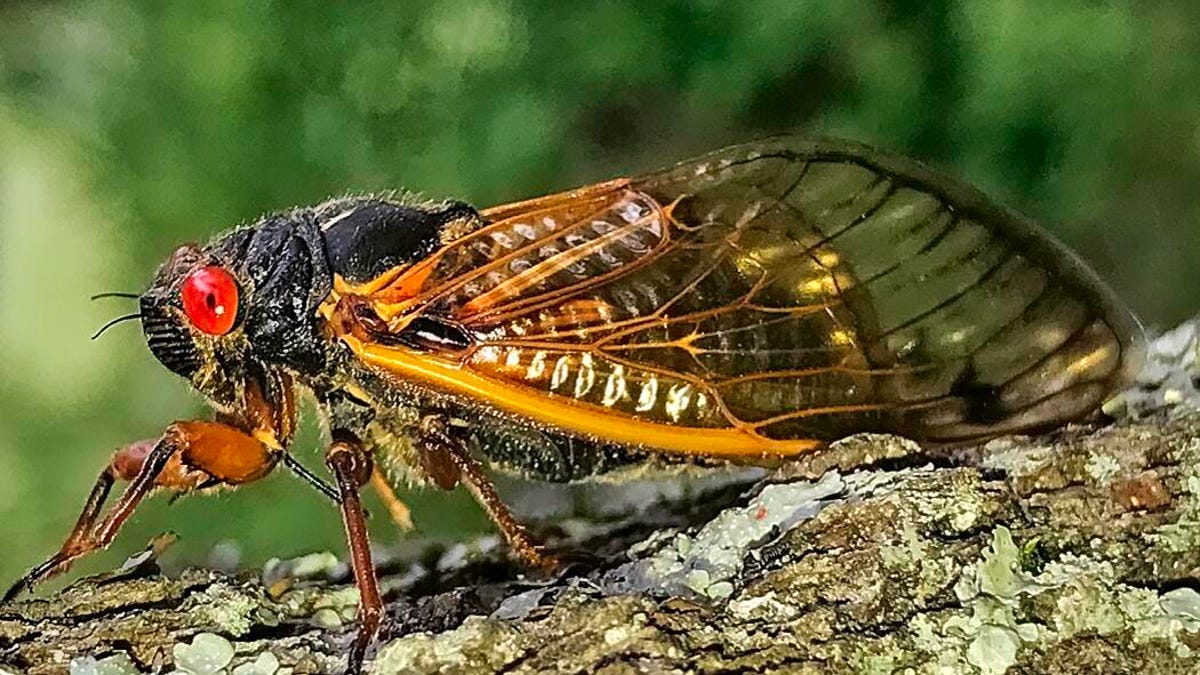The cicadas are coming: How to prep your lawn, trees and yard for Brood X
While there are some benefits to keeping cicadas around, we'll give you some tips for securing your young trees.

Brood X cicadas are already emerging in some states.
It's time for the buzzing insects to emerge. Cicadas -- specifically a group known as Brood X -- are arriving by the trillions in parts of the Eastern US for the first time in 17 years. These insects emerge from underground for six-week lifespans, sometimes landing inside your home, and have the potential to wreak havoc on your smaller, young trees. You may also decide you don't like the look of the rising dirt mounds in your yard and beneath your plants that signal the brood's arrival.
While cicadas do present some benefits, if insects give you the creeps, or if you've got new, expensive trees you've just planted, you may be wondering how to keep the critters away. While you've got limited time left before Brood X arrives, there are several preventative measures you can take to keep them off your young trees. And if they're already there, we've got ways to get rid of them.
Keep reading to find out what you need to do to keep the periodical cicadas out of your trees this spring. We'll also tell you which chemicals or oils not to use -- and why you might even relent and let Brood X stick around. (Plus, here's what happens if your pet eats a cicada.)
Advantages of letting Brood X cicadas nest in your mature trees
While Brood X cicadas are large (one or two inches long) and may be an annoyance, there are some ecological benefits to letting them do their thing uninterrupted, according to entomologists we spoke with. Once cicadas die, they decompose into the ground, which can benefit your trees and surrounding plants the following year by enriching the soil, Gene Kritsky, dean of the School of Behavioral and Natural Sciences at Mount St. Joseph University, told CNET.
In addition, the holes newly hatched cicadas burrow into the ground can help water the trees at a deeper level, as it's equivalent to aerating your yard, Kritsky added.
When the adults reemerge in great quantities, they provide an additional food source to animals, such as birds, opossums, raccoons and even household pets.
Cicadas are large insects with clear wings and bulbous alien-like eyes.
Wrap your trees that are small and younger
When female cicadas emerge, they'll look for areas to lay their eggs -- typically towards the edge where new leaves are located. They'll then puncture the branches and lay their eggs inside. They'll lay between 10 and 20 eggs every quarter of an inch -- they lay around 500 total, Kritsky said, which can cause leaves to wither and turn brown, and even snap.
If you've got trees that you don't want to see get damaged, loosely wrap them as a preventative measure. You can use cheese cloths, foil tape, barrier tape or sticky tape. You'll need to wrap around the tree trunk and where the twigs meet the branch, said Frank Meek, an entomologist and manager of technical services at pest controller Orkin. This will help prevent the female cicadas from laying eggs in your trees.
You can also use landscaping nets around smaller trees to prevent the cicadas from landing on the branches. You may want to hold off planting trees until they're gone, which could be June 20 or even later.
Will cicadas hurt larger trees?
Cicadas can't cause much damage to your larger, mature trees. In fact, the older the tree is, the less amount of damage can be done, Meek said. Instead, it's more like the cicadas are pruning your trees, which can stimulate tree growth.
What if cicadas are already nesting in your trees?
If cicadas have already emerged in your yard, there are several ways to get rid of them.
- Spray them off your trees and plants with a water hose.
- Use your hands to remove them (I know, it sounds gross).
- Place sticky traps on your trees -- this will prevent them from moving any farther.
Keep your small trees wrapped until the cicadas are gone.
What not to use to get rid of Brood X cicadas
If you're trying to get rid of cicadas, avoid using these items.
- Pesticides: This isn't recommended or necessary, according to both Kritsky and Meek, because pesticides have no effect on migrating populations, such as the cicadas.
- Essential oils: It would take loads of essential oils and a lot of maintenance in order to ward off cicadas.
- Bleach: Bleach can slow plant growth, kill plants and leach into the soil, causing longer-term damage.
How to prevent cicadas from coming back
When the eggs hatch in the trees, the baby cicadas -- known as nymphs -- fall from the trees and burrow themselves into the soil until it's their time to rise. Meek says keeping your yard well-manicured with no dirt spots can help prevent them from burrowing. You can fill in the bare spots with sod, seed or hay to protect and cover the ground to reduce the likelihood of the cicadas going back into the soil.
For more information, here's what to know about Brood X cicadas and pet safety. Also, there's a wearable insect pod that protects you from cicadas, if you're worried about them landing on your head.

